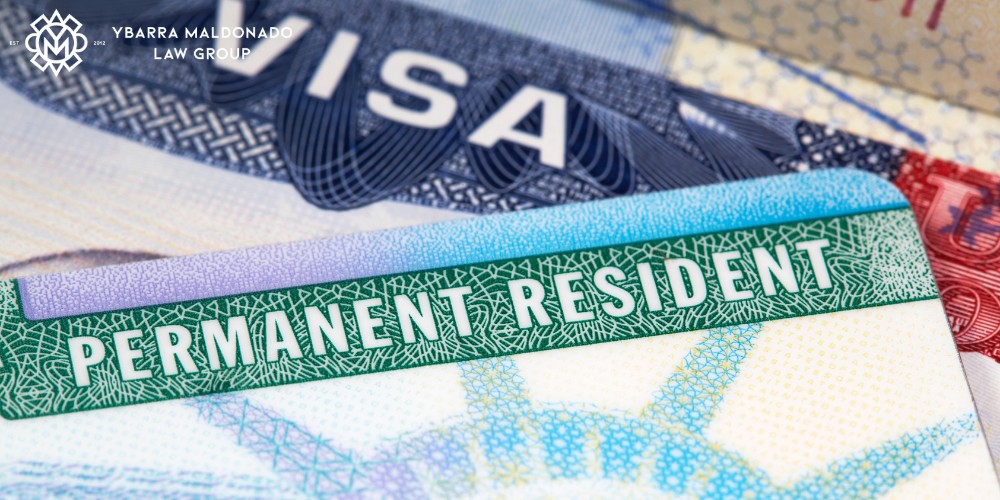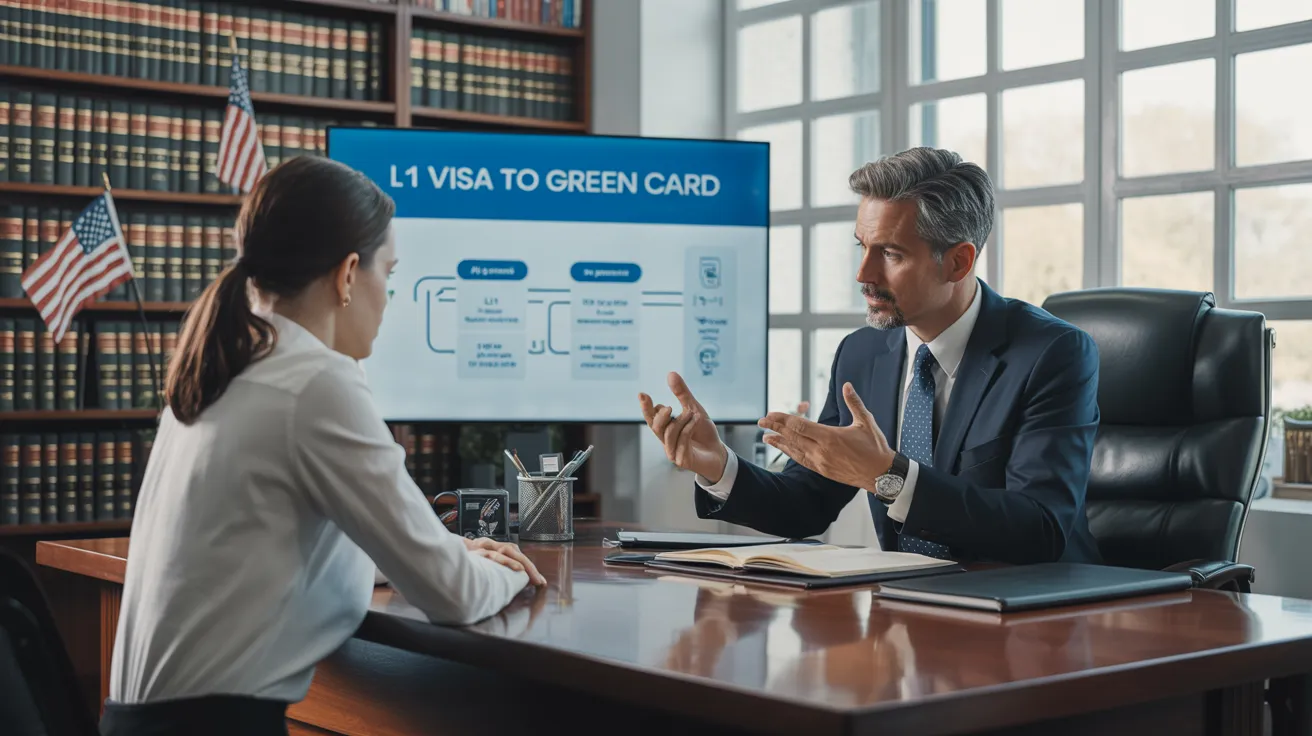Everything You Required to Understand About the L1 Visa: Advantages, Needs, and Extra
The L1 Visa works as a vital device for international firms seeking to move staff members to the USA, facilitating both operational effectiveness and the transfer of specialized knowledge. With unique classifications for executives and specialized professionals, this visa presents numerous benefits, consisting of prospective pathways to permanent residency. Understanding the qualification needs and application procedure is crucial for an effective shift. As we check out the complexities of the L1 Visa, it becomes clear that maneuvering its complexities is critical for companies intending to leverage global skill properly. What obstacles might you encounter in the process?
Summary of the L1 Visa
The L1 visa is a non-immigrant category that allows firms to move workers from foreign offices to their U.S. branches, subsidiaries, or associates. This visa group is particularly useful for international companies looking for to utilize their worldwide skill pool by moving crucial workers to boost operations in the USA. The L1 visa is split into 2 primary subcategories: L1A for managers and execs, and L1B for employees with specialized understanding, each satisfying different organizational needs.The L1 visa assists in the seamless motion of certified staff members, thereby promoting worldwide company growth and functional performance. With the L1A visa, companies can move individuals who hold supervisory or executive duties, allowing them to make critical decisions and look after details divisions within the united state entity. Alternatively, the L1B visa is created for workers possessing specialized understanding necessary to the firm's passions, ensuring that the U.S. office take advantage of unique skills and expertise.One notable benefit of the L1 visa is its dual intent nature, which allows holders to look for long-term residency while keeping their non-immigrant condition. Furthermore, spouses and children of L1 visa owners can accompany them to the United States under the L2 visa category, which additionally enables job consent
Sorts Of L1 Visas
Multiple kinds of L1 visas satisfy the varied needs of multinational firms wanting to move workers to the USA. The two key categories of L1 visas are L1A and L1B, each made for certain duties and obligations within an organization.The L1A visa is planned for supervisors and executives. This group allows firms to move people who hold managerial or executive positions, enabling them to look after procedures in the U.S. This visa stands for a preliminary period of approximately 3 years, with the opportunity of expansions for a total amount of as much as seven years. The L1A visa is particularly valuable for firms seeking to develop a solid leadership visibility in the U.S. market.On the various other hand, the L1B visa is marked for workers with specialized expertise. This consists of people who have innovative proficiency in certain locations, such as proprietary modern technologies or special procedures within the firm. The L1B visa is likewise valid for a first three-year period, with extensions readily available for up to five years. This visa classification is perfect for companies that call for workers with specialized abilities to enhance their procedures and preserve an affordable edge in the U. L1 Visa.S.Both L1A and L1B visas permit double intent, suggesting that visa owners can request irreversible residency while on the visa. Understanding the distinctions between these two classifications is crucial for companies intending to navigate the complexities of staff member transfers to the USA effectively
Qualification Needs
To receive an L1 visa, both the employer and the employee should satisfy particular eligibility criteria established by U.S. migration authorities. The L1 visa is made for intra-company transferees, permitting multinational firms to move workers to their U.S. offices.First, the employer should be a certifying company, which means it should have a parent company, branch, subsidiary, or affiliate that is doing company both in the U.S. and in the foreign country. This partnership is necessary for demonstrating that the staff member is being transferred within the same business structure. The company should also have actually been doing company for a minimum of one year in both locations.Second, the worker should have been employed by the international firm for at the very least one constant year within the 3 years coming before the application. This work has to remain in a managerial, exec, or specialized expertise capacity. For L1A visas, which provide to managers and execs, the employee has to show that they will continue to operate in a comparable capacity in the U.S. For L1B visas, meant for staff members with specialized knowledge, the individual must have distinct knowledge that contributes substantially to the business's operations.
Application Process
Steering the application procedure for an L1 visa includes numerous crucial steps that must be finished precisely to assure an effective outcome. The primary step is to figure out the appropriate group of the L1 visa: L1A for managers and executives, or L1B for workers with specialized understanding (L1 Visa). This difference is substantial, as it influences the documents required.Once the group is identified, the U.S. company should submit Kind I-129, Request for a Nonimmigrant Worker. This form should include detailed information concerning the company, the staff member's duty, and the nature of the work to be done in the united state Accompanying paperwork commonly includes proof of the relationship in between the U.S. and international entities, proof of the worker's qualifications, and information regarding the work offer.After submission, the U.S. Citizenship and Immigration Solutions (USCIS) will evaluate the petition. If accepted, the worker will certainly be informed, and they can then use for the visa at a united state consular office or embassy in their home country. This entails finishing Kind DS-160, the Online Nonimmigrant copyright, and arranging an interview.During the meeting, the applicant has to present numerous documents, consisting of the authorized Form I-129, proof of employment, and any added sustaining proof. Adhering to the meeting, if the visa is provided, the worker will certainly get a visa stamp in their key, permitting them to get in the united state to function for the sponsoring employer. Proper prep work and detailed documentation are key to navigating this procedure efficiently
Benefits of the L1 Visa
Among the notable advantages of the L1 visa is its capability to facilitate the transfer of crucial employees from international offices to the USA. This visa is especially beneficial for international business seeking to preserve uniformity in procedures and leadership throughout boundaries. By permitting execs, supervisors, and specialized staff members to function in the U.S., companies can assure that their most essential ability is readily available to drive organization objectives.Another considerable benefit of the L1 visa is its relatively simple application procedure compared to other work visas. Organizations can petition for the L1 visa without the need for a labor certification, which improves the recruitment of international workers. The visa can be provided for an initial period of up to 3 years, with the possibility of extensions, helping with lasting assignments.The L1 visa also provides a course to long-term residency. Workers on L1A visas (for managers and executives) can get a Permit after one year, accelerating their change to long-term standing. This function is an appealing reward for talented people looking for security in the U.S. workforce.Additionally, L1 visa holders can bring their prompt member of the family to the united state under L2 condition, enabling partners and children to reside and examine in the country, boosting the general appeal of this visa category. Overall, the L1 visa functions as a vital tool for global services, cultivating cross-border collaboration and talent flexibility.
Common Difficulties
While the L1 visa offers many benefits for international companies and their staff members, it is not without its obstacles. One remarkable obstacle is the stringent paperwork and qualification needs enforced by the united state Citizenship and Migration Services (USCIS) Business must supply thorough evidence of the foreign staff member's credentials, the nature of the business, and the certifying partnership between the united state and foreign entities. This procedure can be lengthy and might call for legal competence to browse successfully.Another obstacle is the potential for analysis during the application procedure. USCIS officers might question the authenticity of the service operations or the employee's function within the organization. This examination can bring about delays or perhaps rejections of the copyright, which can significantly impact the business's functional plans and the staff member's job trajectory.Furthermore, the L1 visa is connected to the sponsoring employer, which indicates that job modifications can make complex the visa condition. If an L1 visa owner desires to change companies, they need to frequently pursue a various visa classification, which can include complexity to their migration journey.Lastly, maintaining conformity with L1 visa laws is essential. Companies have to guarantee that their staff member's role lines up with the initial petition and that business remains to meet the qualification needs. Failure to do so can result in revocation of the visa, impacting both the staff member and the company. These obstacles require detailed preparation and recurring management to ensure an effective L1 visa experience.
Tips for Success


To effectively navigate the L1 visa process, careful preparation is important. Begin by thoroughly recognizing the particular requirements for the L1 visa classification you are looking for, whether L1A for supervisors and execs or L1B for staff members with specialized expertise. Gather all needed documentation early while doing so, including proof of your employment background, organizational structure, and the nature of find out more business operations.Engage legal advise experienced in migration regulation to direct you through the ins and outs of the application. A lawyer can help guarantee that your application is total, accurate, and engaging. They can likewise help in preparing for possible demands for proof (RFEs) by proactively attending to areas that might raise questions.Additionally, preserve clear communication with your company, that must provide necessary assistance for your application. Confirm that they comprehend their obligations, including submitting the needed applications and supplying documents that substantiates your function in the organization.Prepare for the visa meeting by practicing response to common questions regarding your expert background and the nature of your employment. Demonstrating confidence and quality can considerably impact the outcome of your application.
Often Asked Inquiries
Can Family Members Members Accompany L1 Visa Holders?
Yes, relative can accompany L1 visa owners. Spouses and unmarried kids under 21 years of ages are qualified for L2 visas, which permit them to live and research in the USA during the L1 holder's keep.
Exactly How Lengthy Can L1 Visa Holders Remain In the U.S.?
L1 visa holders can initially remain in the united state for as much as 3 years. This period may be extended, allowing a maximum keep of seven years for L1A visa holders and 5 years for L1B visa owners
Is the L1 Visa a Twin Intent Visa?
The L1 visa is considered a twin intent visa, enabling owners to pursue permanent residency while maintaining their short-term non-immigrant standing. This flexibility promotes long-lasting occupation chances for global workers within united state business.

Can L1 Visa Owners Obtain a copyright?
Yes, L1 visa holders can request an environment-friendly card (L1 Visa Requirements). The L1 visa supports dual intent, allowing holders to pursue long-term residency while preserving their non-immigrant standing, facilitating a smoother changeover to a permit
What Takes place if an L1 copyright Is Refuted?
If an L1 copyright is denied, the applicant might obtain a notification describing the factors for denial. They can appeal the decision, reapply, or discover different visa options depending upon their situations and qualifications.
Conclusion
In summary, the L1 Visa offers as a vital tool for multinational companies looking for to transfer employees to the USA. Comprehending the differences between L1A and L1B classifications, together with the qualification needs and application procedures, is crucial for successful navigation of this non-immigrant classification. The benefits supplied, consisting of streamlined applications and pathways to irreversible residency, further enhance its allure. What Is L1 Visa. Resolving common challenges properly can cause a much more desirable outcome in the copyright process